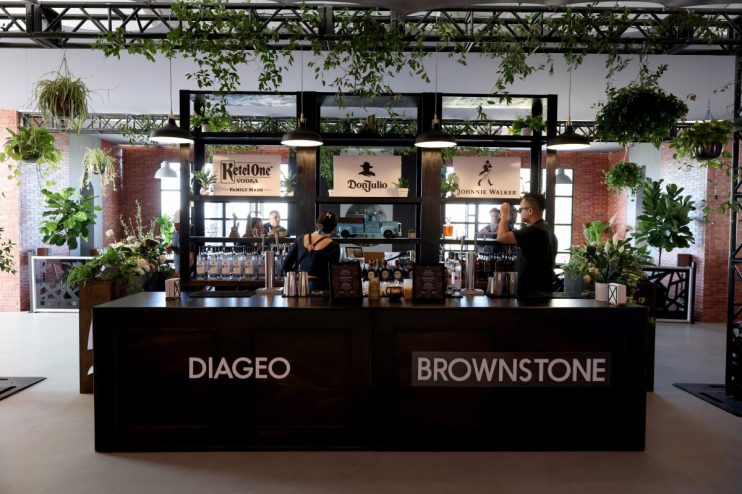
The past three years have been challenging for the global alcohol giant Diageo. The group booked a windfall during the pandemic years as stuck-at-home consumers splashed out on high-end alcohol to drown their sorrows, but this explosive growth soon evaporated.
Diageo, best known for its Guinness and Johnnie Walker scotch whisky brands, struggled against the headwinds buffeting the whole luxury beverage sector as the pandemic years moved into the rear view mirror. Free of the restrictions brought in during the pandemic, consumers stopped drinking as much at home, while skyrocketing inflation also pushed them to tighten their spending habits.
Another trend has emerged that’s pretty unique to the drinks industry. Younger generations are drinking less than their older counterparts, a concerning demographic shift for the world’s largest spirits producer.
However, while consumers are drinking less, they are spending more on each drink. The market is shifting away from low-quality volume to high-quality luxury, and Diageo is looking to capitalise on this trend.
Luxury launch
In November last year, the FTSE 100 company officially announced the creation of the Diageo Luxury Group, bringing together some of its most exclusive brands and experiences under one division and leadership team.
The division is home to Diageo’s premium Johnnie Walker expressions, Don Julio, Casamigos, tequila brands, Cîroc vodka, and others. It also includes Diageo’s experiences, such as the Johnnie Walker Princes Street experience in Edinburgh and the reopened Brora/Port Ellen distillery. The fine wine merchant Justerini & Brooks also sits under this umbrella.
The premium and super premium segments of the drinks market are growing twice as fast as the rest of the industry. In the last 10 years globally, premium and above spirits grew from 26 per cent of the spirits category value to almost 35 per cent.
While Diageo is already the biggest player in the luxury market in many regions, there’s still plenty of room for growth. The opportunity is evident in the UK. “In the UK specifically, our share of premium plus sits at around 20 per cent, whereas our share of standard spirits sits at over 50 per cent. So you can just see that opportunity,” Laura Pearce, Marketing Director for the Diageo Luxury Company, tells City AM.
In the UK, the premium and super premium segments of the market are defined as anything over £30 a bottle or £100 a bottle, and the most lucrative opportunities lie in the latter group.
Tequila has been a particular winner for the company in the UK. Diageo is focusing on younger adults with this beverage, marketing via experiences and offering smaller bottles at higher price points. It’s also leveraging its position in the trade to get the product to consumers. Don Julio & Casamigos are #1 & #2 bartender recommendations, and Casamigos leads super-premium in grocery according to Nielsen, Kantar, BGS and CGA data. In Great Britain, tequila is attracting the most new drinkers with a 31 per cent penetration growth last year in the 25 to 34 age bracket.
“Firstly, you’ve got to have the quality and the heritage… But the thing that we really think is evolving and changing is you’ve got to then be experience and culture-led…” explains Pearce when asked how Diageo is driving growth in these luxury channels. “You may choose to go out and have one drink that evening, but we want that drink to be a bloody great drink and for it to be an amazing experience,” she adds when asked how the group is trying to grow while responding to changing consumer tastes.
Experiences and partnerships
Experiences and partnerships are a key pillar of this growth strategy. In October last year, Diageo launched its new ‘Johnnie Walker Blue Label Ice Chalet’, with an exclusive space at Selfridges in conjunction with luxury skiwear and lifestyle brand, Perfect Moment. It also launched a partnership with Netflix around the launch of season two of Squid Games with a limited edition bottle design of Black Label. Earlier this year, Don Julio and The Savoy – the Official Hotel to the EE BAFTA Film Awards – created a limited-edition, celebratory cocktail in collaboration with BAFTA.
Diageo has also picked up a shift in spending patterns among younger drinkers. “We are seeing the growth in premium and super premium really coming from Gen Z and millennials,” explains Pearce. Younger drinkers also tend to be more willing to try something different and branch out into different drinks, such as whisky. “We are seeing 18-plus people coming into whiskey… We’re seeing more women actually come into whiskey as well, which felt really exciting,” notes Pearce.
Improving accessibility for those drinkers is also a priority for the Diageo Luxury Group. “It’s making luxury more accessible… giving different entry points and making it more accessible to more people,” says Pearce. In the UK market, the company has opened new markets by introducing more accessible formats of premium products, such as £4 Cîroc cans and £20 Don Julio minis.
These are still priced as a premium product, but are far more accessible to younger consumers, who may not be able to afford or want to spend £150 on a bottle of Don Julio tequila. “I think the beauty of luxury drinks is actually it’s a treat that you can have that isn’t completely going to break the bank… In tougher times, I think people need those experiences…” says Pearce.









